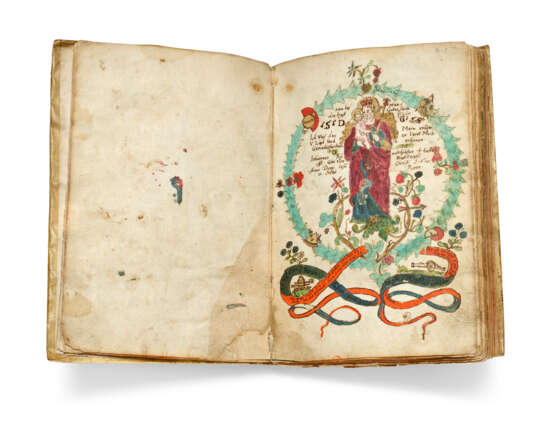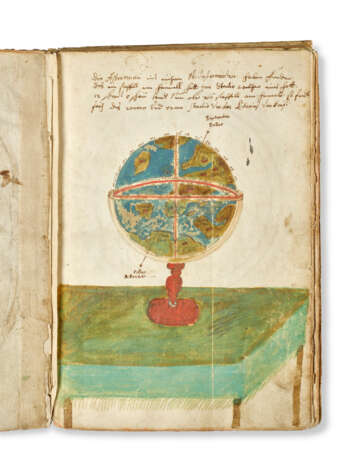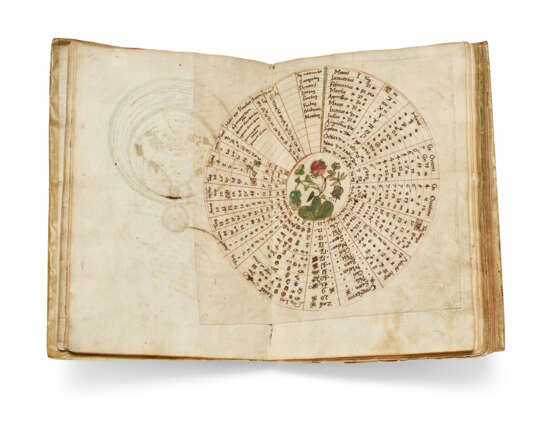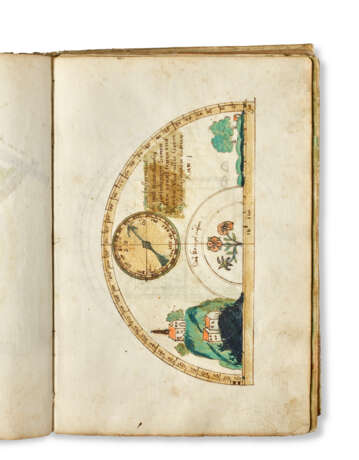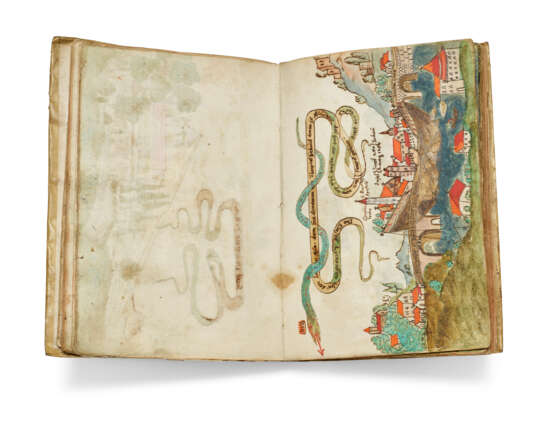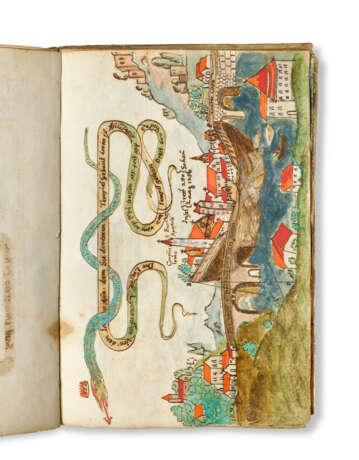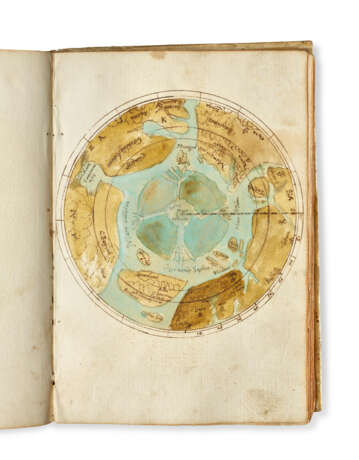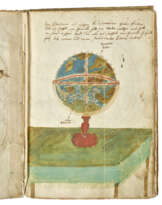ID 1109151
Lot 349 | Johann Rudolph Halter of Basel
Valeur estimée
£ 15 000 – 22 000
A mathematical, astronomical and surveying sketchbook, in Swiss-German and Italian, manuscript on paper, [Italy and Switzerland, 1627-28 and later 17th century]
An engaging and profusely illustrated sketchbook of budding Basel surveyor and mathematician Johann Rudolph Basel, containing many detailed views of Rome and the Italian countryside.
195 x 132mm. i + 159 + i leaves, complete, collation: 16, 28, 315 (vii an added singleton), 414, 513 (of 14, xiv a cancelled blank), 69 (v an added singleton), 712, 88, 914, 10-1116, 12-1314, 58 leaves blank, partial foliation in pencil, the text written in at least three separate hands, full-page allegorical frontispiece, emblematic title-page and armorial leaf, c.70 pages with diagrams, charts, quadrants, maps, urban and country views, etc. painted in watercolours and gouache, some heightened with gold (some ink erosion, marginal soiling and foxing, some gatherings and leaves a little loose, edges of pages occasionally frayed, some rubbing of watercolours). Contemporary vellum (warped and a little soiled).
Provenance:
(1) Johann Rudolph Halter, astronomer, surveyor and mathematician of Basel: his name appears on the allegorical frontispiece, dated Rome, 11 May 1627; on the emblematic title-page, in a cartouche surrounded by astronomical and scientific instruments: 'Kunst Bauch Iohann Ruodolph Halter von Bassell dorm in allerley Geometerise auch Astronomise [...]', dated 20 February 1628; and on the armorial leaf. The watercolours and landscape surveys in the first half of the manuscript are variously dated 1627 and 1628, and many of the country and city views are of Rome and the surrounding Italian countryside, which suggests Halter visited there during those years. They are usually captioned in Halter's hand in Swiss German, but at least two other near-contemporary hands have added to the manuscript: 8 watercolours, interspersed with Halter's, are in a different style and the captions are in Italian. Some of Halter's illustrations bear notes in this same hand. 35 leaves at the end of the manuscript, in yet another Italian hand, contain a complete transcript of Galileo's work Le Operazioni del Compasso Geometrico e Militare, a text of practical mathematics conceived as a 'scherzo matematico' for the young prince Cosimo de' Medici, first published in Padua in 1606 in an edition of only 60 copies, and subsequently issued in 1619 (Naples) and 1640 (Padua).
(2) Various 20th-century Italian book dealer's codes in the inside lower board, including a purchase date of 8 July 1937.
(3) Sotheby's New York, Fine Books and Manuscripts (5330), 22 May 1985, lot 321.
Content:
The first part of the manuscript, ff.4-61 and 79-81, comprises drawings and charts of an astronomical, mathematical, geometric and surveying nature. The illustrations include a globe (f.7); a volvelle (f.9); the solar system, dated Rome, 21 May 1627 (f.11); a calendar and astrological tables (ff.12-14); quadrants (ff.15-17); a compass-rose (f.18); a drawing of a Solar eclipse, dated 1 March 1628 (f.21); a wind rose (f.24); a terrestrial globe (f.28); a sequence of 31 landscape surveys, principally of sites in Rome and its surrounding countryside (ff.61); maps of the Faroe Islands, Friesland and the North Pole with its four rivers, all based on Mercator. ff.79-81. The second part of the manuscript, beginning on ff.84v, is written in a later 17th-century Italian hand, and contains diagrams of quadrants and a transcription of Galileo's 1606 opusculum, Le Operazioni del Compasso Geometrico e Militare (ff.86-120).
| Lieu d'origine: | Suisse |
|---|---|
| Catégorie maison de vente aux enchères: | Manuscrits médiévaux et de la Renaissance |
| Lieu d'origine: | Suisse |
|---|---|
| Catégorie maison de vente aux enchères: | Manuscrits médiévaux et de la Renaissance |
| Adresse de l'enchère |
CHRISTIE'S 8 King Street, St. James's SW1Y 6QT London Royaume-Uni | |||||
|---|---|---|---|---|---|---|
| Aperçu |
| |||||
| Téléphone | +44 (0)20 7839 9060 | |||||
| Commission | see on Website | |||||
| Conditions d'utilisation | Conditions d'utilisation |
